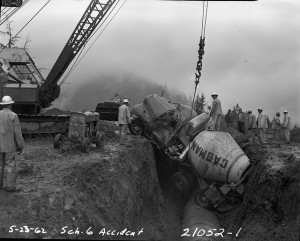When is a General Contractor Liable for the Injury of a Subcontractor’s Employee?
This year the Illinois Appellate Courts have been busy analyzing general contractors’ degree of retained control over construction projects and resulting liability for injuries, if any. Four key appellate court decisions have been rendered. The following is a brief overview of the recent opinions.
Summary Judgment upheld when general contractor did not promulgate a body of safety rules for subcontractors to follow
 The plaintiff, an employee of a subcontractor, was injured while setting roof trusses on top of a garage. Suit was filed against the general contractor. “The best indicator of whether a contractor has retained control over the subcontractor’s work is the parties’ contract, if one exists.” The Court first looked to the contract language – and found that the general contractor did not contractually retain any control over the subcontractor. The court also noted that the general contractor “did not promulgate a body of safety rules for subcontractors to follow.” Summary judgment in favor of the general contractor was upheld, finding that the general contractor owed no duty to the plaintiff. Cain v. Contarino, 2014 IL App 130482 (Ill. App. Ct. 2d Dist. 2014).
The plaintiff, an employee of a subcontractor, was injured while setting roof trusses on top of a garage. Suit was filed against the general contractor. “The best indicator of whether a contractor has retained control over the subcontractor’s work is the parties’ contract, if one exists.” The Court first looked to the contract language – and found that the general contractor did not contractually retain any control over the subcontractor. The court also noted that the general contractor “did not promulgate a body of safety rules for subcontractors to follow.” Summary judgment in favor of the general contractor was upheld, finding that the general contractor owed no duty to the plaintiff. Cain v. Contarino, 2014 IL App 130482 (Ill. App. Ct. 2d Dist. 2014).
General contractor lacks retained control when subcontractor is contractually responsible for safety
Plaintiff, an employee of a subcontractor, was injured when he tripped on a pipe. Plaintiff sued the general contractor, alleging it retained control. In construction negligence cases where there is a contract between a general contractor and a subcontractor that employed the plaintiff, summary judgment in favor of the general contractor is appropriate where a subcontractor is contractually responsible for jobsite safety. The general contractor took no active role in ensuring safety. Although general contractor had supervisory authority, it did not exercise this authority and in no way altered or directly supervised the work of the subcontractor. The general contractor never stopped work, and the subcontractor controlled the means and methods of its own work during construction. Summary judgment in favor of the general contractor upheld. Fonseca v. Clark Constr. Group, LLC, 2014 IL App 130308 (Ill. App. Ct. 1st Dist. 2014).
Existence of safety program, safety manual and safety director does not constitute retained control
Plaintiff fell while working on a ride at a Six Flags theme park. Plaintiff, an employee of a subcontractor, sued the general contractor/owner, Six Flags. The Court affirmed summary judgment in favor of the general contractor despite the fact that the general contractor/owner provided safety guidelines to its subcontractors and required OSHA compliance. The Court noted that the existence of a safety program, safety manual and safety director does not constitute retained control. The Court also noted that requiring compliance with OSHA regulations does not create a duty of care. The Court upheld the granting of summary judgment in favor of an owner/general contractor. Lee v. Six Flags Theme Parks, Inc. 2014 Ill. App. 130771 (Ill. App. Ct. 1st Dist. 2014).
General contractor potentially liable when its safety policy specifically prohibited one means and method of performing work
Plaintiff, an employee of a subcontractor, was injured while standing on stilts when performing construction work. The contracts required the subcontractor to: 1) report any improper conditions at the site; 2) follow general contractor’s safety program; 3) attend weekly meetings; 4) appoint safety representatives to ensure compliance and employee training; and 5) hold weekly tool box talks. The Court also noted that the general contractor’s safety policy specifically prohibited the use of stilts. The policy “specifically prohibited one means and method of performing work.” The Court held that there was sufficient evidence against the general contractor and reversed summary judgment in favor of the general contractor. Lederer v. Executive Construction, Inc., 2014 Ill. App 123170 (Ill. App. Ct. 1st Dist. 2014).
Image by Seattle Municipal Archives licensed under CC BY 2.0
